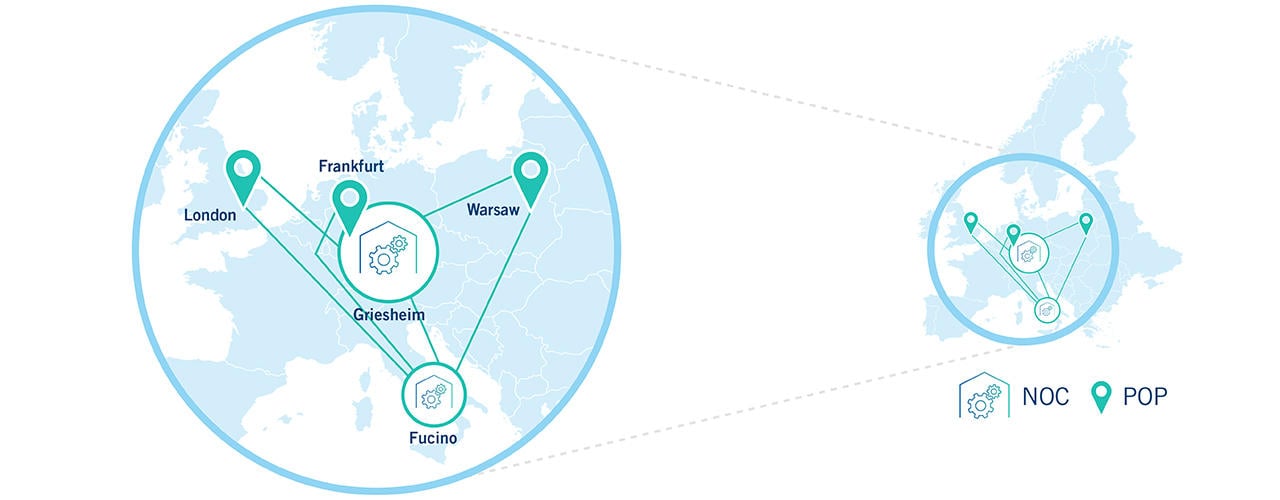Managed Network Systems Network Monitoring
We manage your network monitoring so you can be sure everything is running smoothly
At Hughes Europe we are committed to delivering the highest levels of network availability. Our dedicated network monitoring experts based in our core Network Operations Centre in Greisham, Germany are highly skilled in the managed network systems solutions & network monitoring spanning multiple technologies and connectivity types.
To deliver the support our customers need, we provide a range of services from our NOC covering all aspects of network management for our customer's managed networks, from network design to in-life change management.
A core infrastructure that delivers...
Resilience and availability are at the heart of our managed network systems and network monitoring approach so we’ve built a core network infrastructure that delivers both. The Hughes Europe purpose-built NOC in Griesheim Germany has a resilient Satellite back-up NOC in Fucino Italy. The NOCs are connected to the Hughes European backbone with redundant high-speed links connecting through Hughes POPs in London, in Frankfurt, and in Warsaw. The Hughes European backbone also connects redundant high-speed Internet breakouts in both London and Frankfurt and delivers redundant connection into different Telco backbone infrastructures in multiple countries across Europe to support private DSL networks.

